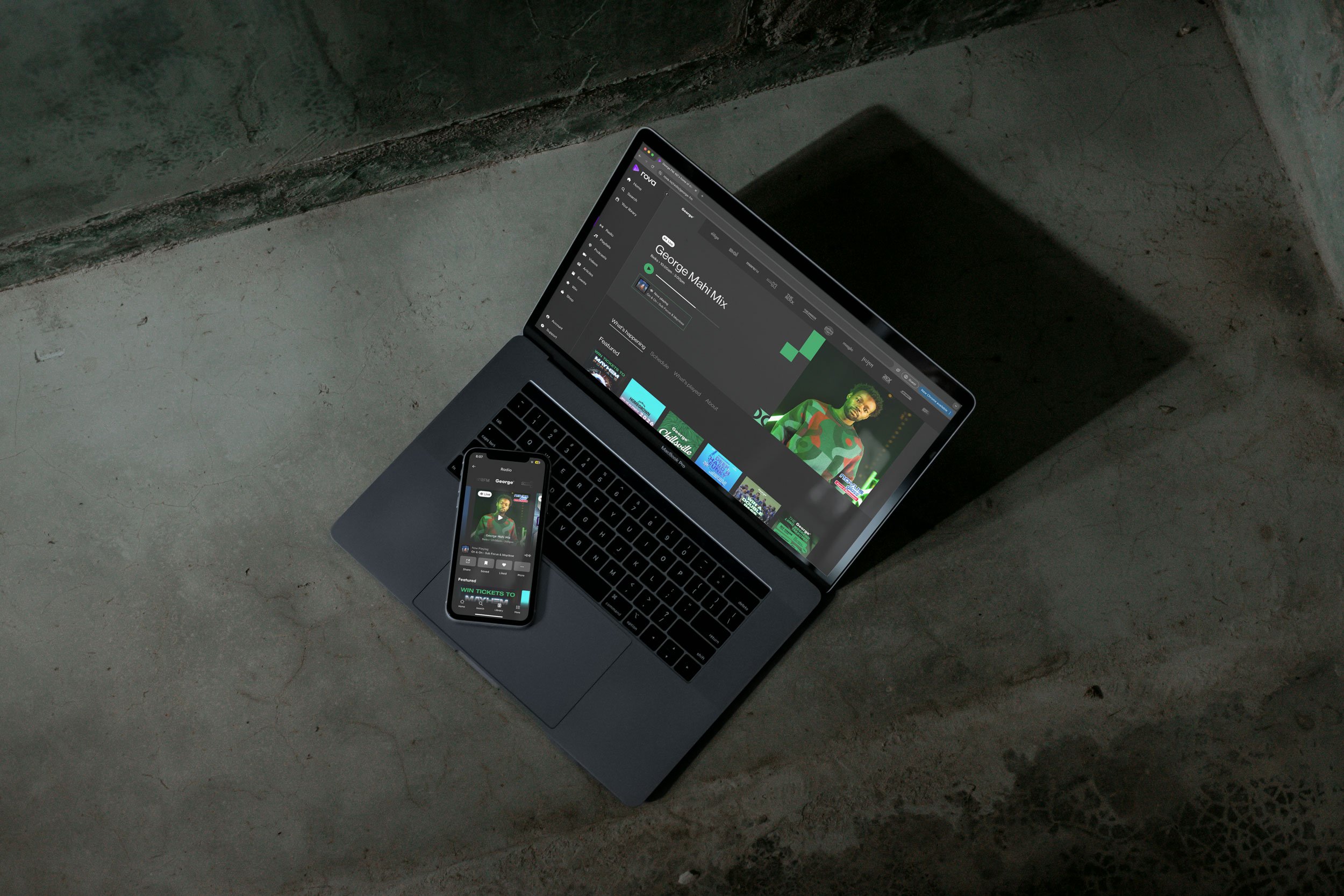rova
2024
UX Foundations for New Zealand’s Entertainment Hub
The Rova app is MediaWorks' newly reimagined digital platform, centralising live radio, podcasts, videos, and articles from 14 of New Zealand's most loved radio brands. Involved early in the design phase, we had one week to synthesise a broad brief into focused UX to validate core user journeys against client-led focus group sessions.
Contribution
UX Designer
Deliverables
Lo-fi UI Componentary
Wireframes for User Testing
Focus Group Testing Script
Design Team
Lily Wigglesworth
Vonnie Joe
Nel Johnson
The Why
MediaWorks previously hosted its 10 radio brands on individual sites. With over 2.44 million weekly radio listeners and 1.1 million monthly digital users, we saw an opportunity to unify its entertainment offering into one experience. The goal was to move users from passive listeners to active participants, providing a platform that reflects New Zealanders’ shifting media consumption needs—flexibility, personalisation, and multi-format content on demand.
The How
Our job was to translate key hypotheses into clickable, testable lo-fi wireframe flows. Artefacts were designed with priority to:
Cross-platform coverage: desktop and mobile
Mobility-first logic to support real-life use cases (commuting, workouts, etc.)
Universal UI design to simplify navigation and content discovery
A consistent design system supporting brand individuality across MediaWorks stations
Familiar interaction patterns using TV app-style content rails and social-style content feeds
Heroing the “live on air” experience as the platform’s central feature
Research Methods
Client discovery workshops
Hypothesis mapping and goal alignment
Prototype scripting and embedded annotations
Interactive lo-fi wireframes for guided testing sessions
User testing conducted by MediaWorks, with design refinements based on feedback
Key motivators
Key motivators for the Rova audience included:
Familiarity: Navigation patterns borrowed from Netflix, Spotify, and TikTok made the app feel intuitive
Control: Users wanted the ability to follow, save, and revisit content effortlessly
Convenience: A unified platform made content quicker to find
Live-first: Quick access to live radio was a top priority
Community: Some users were interested in connecting with hosts or fellow listeners
On-demand: Users expected smart recommendations, playback memory, and cross-format browsing
Mobility: Features needed to support on-the-go listening—from commuting to working out
Key learnings from focus group testing sessions:
A strong preference for a streamlined navigation—merging Home + Feed tabs to combine personalised and general content
Search results focused on user-driven discovery, showing all content types without overlays of suggested or trending media
Users rejected an integrated chat with announcers; they preferred direct call or text options linking to their native phone app
The “Stories” format was not well received—findings leaned toward a Reels/Shorts-style video preview model
The Results
These insights led to:
Consolidated architecture and navigation model
Enhanced prioritisation of high-value features
A solid UX foundation for personalised, on-demand, and live-first experiences
By integrating live content, personalised recommendations, and a variety of on-demand media, this early UX work laid the foundation for the entire Rova experience. The result was a user-first structure that made content easy to discover, leaned on familiar interaction patterns, and positioned Rova as an entertainment hub built for Kiwis, by Kiwis.








